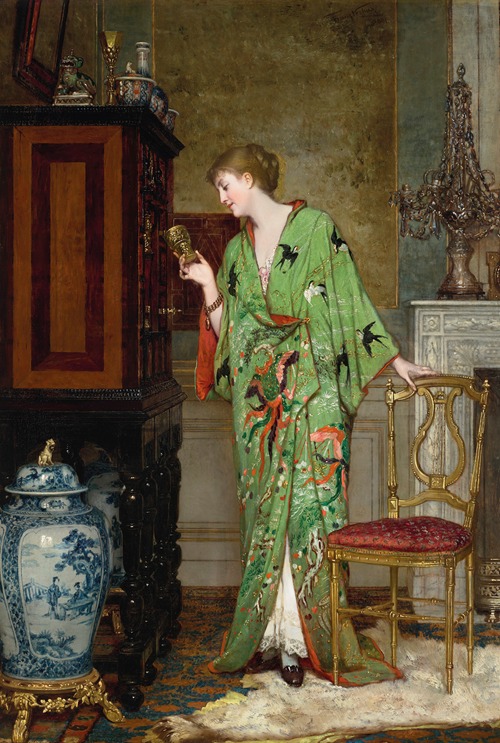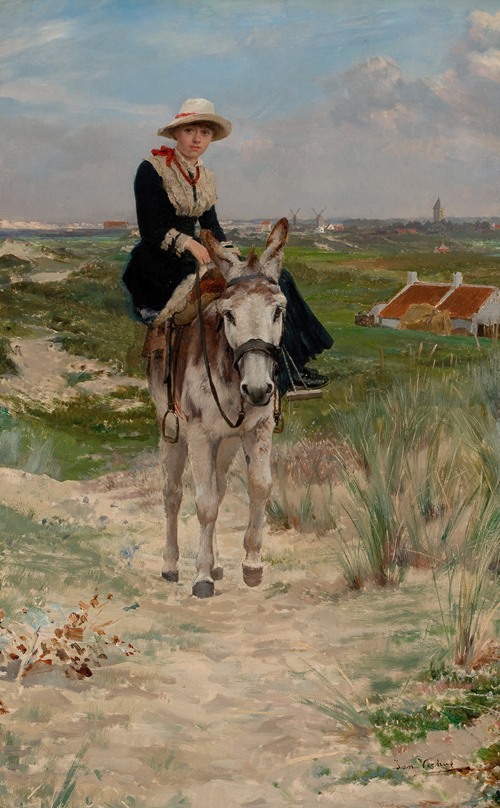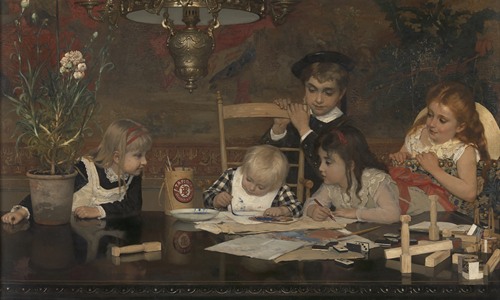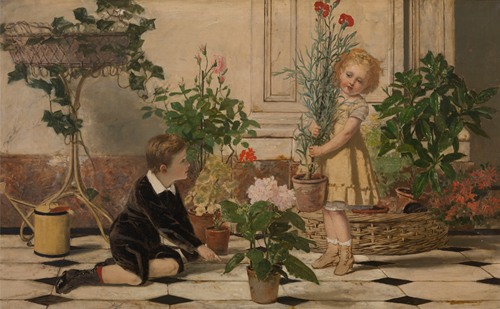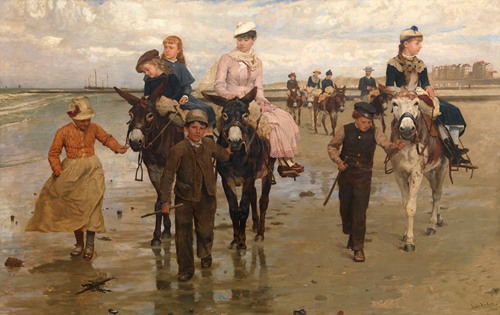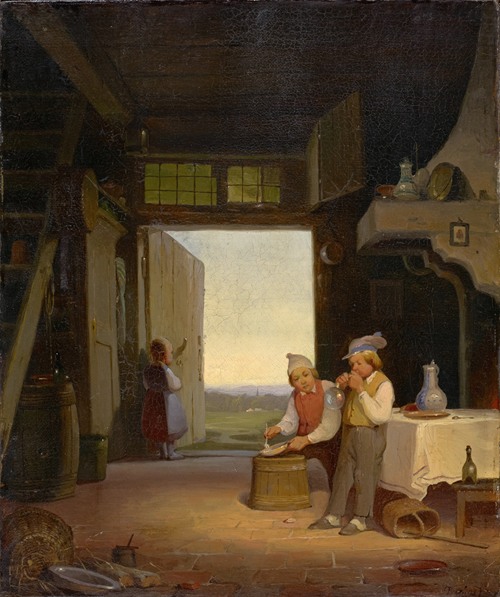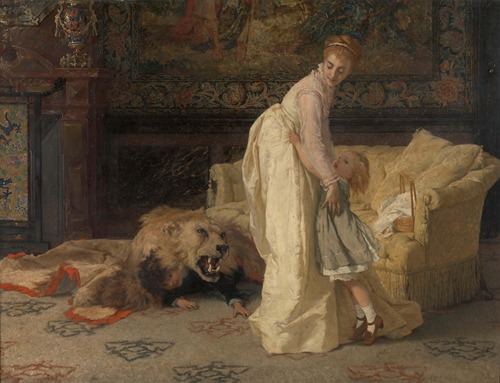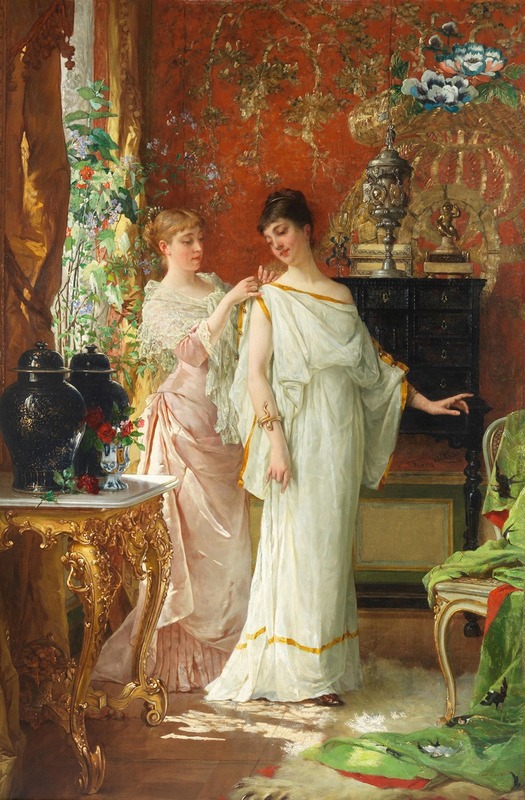
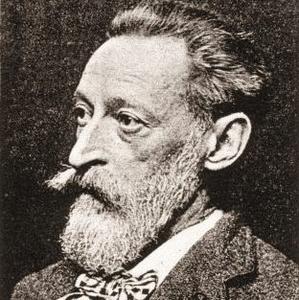
Jan Verhas or Jan Frans Verhas was a Belgian painter of the Realist school. He was known for his portraits and genre paintings often depicting children of the Belgian bourgeoisie. Jan Verhas also painted history paintings, coastal landscapes, beach scenes, seascapes and the occasional still life of flowers. He was an important representative of the Realist movement in Belgium.
Jan Verhas was born in Dendermonde as the son of Emmanuel Verhas. His father was a painter who for twenty years was a teacher at the local Academy and also served as a director of that Academy. Jan received his initial art training from his father as did his older brother Frans). Just like Jan, his brother Frans became a successful artist.
Verhas studied initially at the Academy of Fine Arts in his hometown Dendermonde and from 1853 onwards at the Royal Academy of Fine Arts of Antwerp. His teachers at the Antwerp Academy included Nicaise de Keyser and Jan Antoon Verschaeren. Nicaise de Keyser was a painter of mainly history paintings and portraits and one of the key figures in the Belgian Romantic-historical school of painting. Verhas' fellow students at the Academy included the Dutch painter Lawrence Alma-Tadema and Karel Ooms. Verhas struck up a life-long friendship with them.
Verhas completed his studies in 1860. After spending a few months in Paris he participated in the same year in the Belgian Prix de Rome. He was awarded the second prize in the competition. This meant he did not win the large stipend that came with the first prize. Still, the Belgian government awarded him a special subsidy of 1,200 francs and commissioned from him a composition depicting the Battle of Kallo.
In 1862 he travelled via Paris and Lyon to Italy, where he made stops in Turin, Milan and Venice. He remained in Venice for two to three months, studying and copying the masters. Lack of funds forced him to leave Italy. He travelled back via Paris where his brother Frans was working at the time. Jan assisted his brother in the execution of several decorative projects. Afterwards he resided in Antwerp. Here he made a living as a portrait artist and finished the composition of the Battle of Kallo in 1863.
From 1864 to 1867 the artist lived in Binche as he had fallen in love with and married a woman from that town. His wife was the aunt of Louise Ponselet-Saintenoy. A daughter born from his marriage married later the painter and jurist Gisbert Combaz.
Verhas settled in Brussels in 1867. He then largely abandoned history painting in favor of depictions of scenes from contemporary life. He was encouraged in this by Lawrence Alma-Tadema who was then living in Brussels. From that time his career took off as he received many official as well as private commissions including for portraits of children and genre scenes with children. Starting from 1882 Verhas abandoned his scenes of bourgeois interiors with children. He started to spend time in Heist-aan-Zee on the Belgian coast where he explored new themes and the practice of plein air painting. The artist devoted himself to the representation of lively scenes he witnessed in the coastal area: children playing on the beach, elegant ladies making donkey rides, local processions as well as portraits of local characters.
Verhas made a number of trips including to Berlin where he met Adolph Menzel and to Munich and London where he met up with his old friend Lawrence Alma-Tadema. He painted a picture of the opulent residence of Alma-Tadema in London.
Verhas regularly contributed works to the various Salons of his time. He won a second class medal in the Paris Salon of 1881 and gold medals at the Berlin exhibition of 1883 and the Exposition Universelle of 1889.
Verhas received several official distinctions. The Belgian government made him an Officer in the Order of Leopold and the French government made him a Chevalier (Knight) in the Legion of Honour in 1881.
Jan Verhas died in Schaerbeek in 1896.
